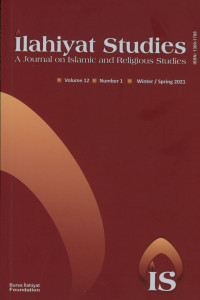Early Sunnī Historiography: A Study of the Tārīkh of Khalīfa b. Khayyāṭ, by Tobias Andersson
Early Sunnī Historiography: A Study of the Tārīkh of Khalīfa b. Khayyāṭ, by Tobias Andersson
First Paragraph: My first encounter with Khalīfah ibn Khayyāṭ (d.240AH/854CE) was during my undergraduate study, where in one of the courses I was assigned to review the development of the genre of ṭabaqāt (prosopography arranged by affiliation or generation) in early Islam. It was then that I learned that Khalīfah has gained his reputation as a distinguished scholar of history, particularly among the sunnī scholars of post canonization of ḥadīth scholarship, by virtue of his two works Ṭabaqāt and Tārīkh. The scholar marks the emergence of a distinct genre of ḥadīth-influenced historical writing in Muslim tradition as illustrated by Akram al-ʿUmarī who studied the methods and sources of Khalīfah in his edition of Tārīkh. Recently, al-ʿUmarī’s treatment proves to be a useful source for both Ḥusayn ʿĀṣī in his Arabic survey of Khalīfah’s method in Ṭabaqāt and Tārīkh, and Tobias Andersson, the author of the present work in review. Furthermore, Khalīfah’s Tārīkh, as identified by its first reviewer in the West, Josef Schacht in 1969, as well as Andersson himself in the present work, is the oldest Islamic chronicle that ever survived. Coincidentally, Khalīfah’s Ṭabaqāt is also one of the oldest preserved biographical dictionaries of ḥadīth transmitters, besides the famous Ṭabaqāt of Muḥammad ibn Ṣaʿd (d. 230AH/845CE). The effort of Andersson to “reassess and reappraise Khalīfah’s Tārīkh by means of a detailed analysis of both the text and the context of its compilation,” therefore, is a welcomed contribution to not only our apprehension of Islamic historiography, but also to the field of ṭabaqāt and ḥadīth studies.
Keywords:
Sunnī, Historiography Khalīfa b. Khayyāṭ,
- ISSN: 1309-1786
- Başlangıç: 2010
- Yayıncı: Bursa İlahiyat Vakfı
Sayıdaki Diğer Makaleler
Early Sunnī Historiography: A Study of the Tārīkh of Khalīfa b. Khayyāṭ, by Tobias Andersson
Traditionist Internal Reform: Motives behind the Birth of the First Manual of ʿUlūm al-Ḥadīth
Dialectical Encounter: Contemporary Turkish Muslim Thought in Dialogue by Taraneh R. Wilkinson
